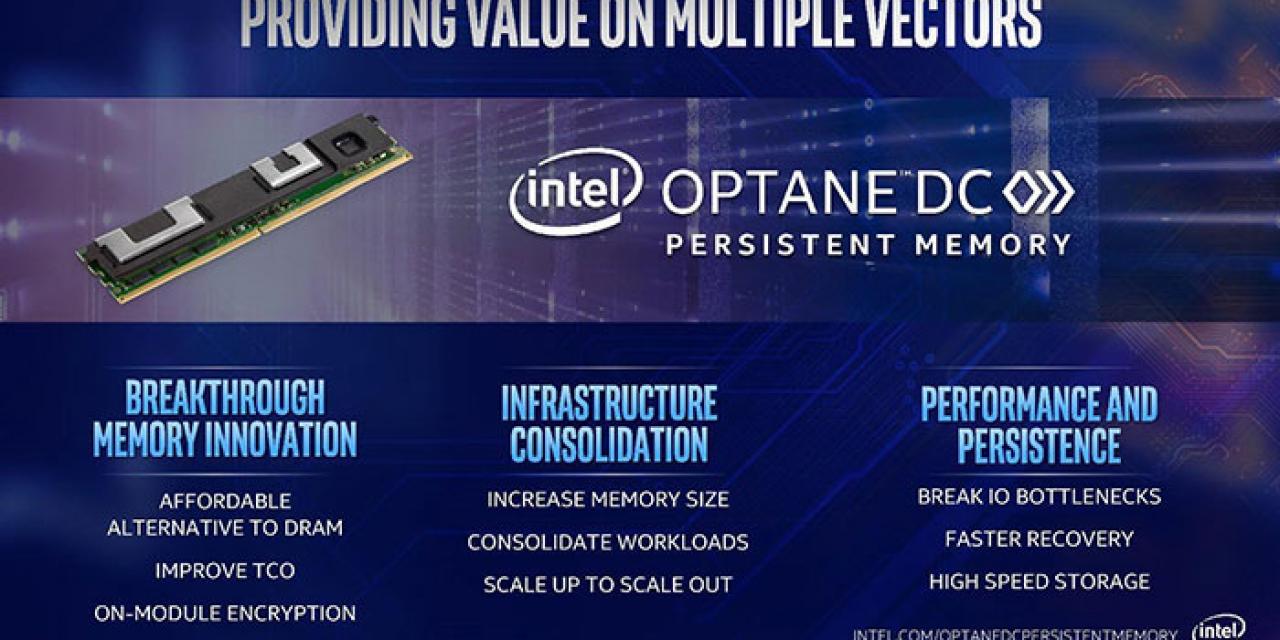
In the world of extreme PCs, there are two sides to the coin. There is the overclocking, RGB, watercooled, and LN2-chilled side, and the server side. In the latter case, we rarely see big advancements in GPUs and single-core processing capabilities, but we do see a hell of a lot of enhancements when it comes to multicores, multithreaded workloads, and memory and storage.
It's in that latter category that Intel has been making strides as of late, with the introduction of a new RAM-type called Optane DC Persistent Memory. It's a little like high-speed storage, and a little like memory, allowing datacenters and servers to store information in the RAM, rather than in long-term storage. That means large datasets can be much more immediately available at a lower latency and higher bandwidth, leading to much faster processing of large swathes of data.
Optane DC Persistent Memory delivers what Intel calls "breakthrough storage-class memory capacity to the Intel Xeon Scalable platform." This will deliver "faster-than-ever analytics, cloud services, virtualization and next-generation communication services," Intel said, via Hexus.
Alongside the new memory, Intel also introduced new Optane DC SSD, the D4800X, which we're told offers nine times the read speed of a standard NAND flash SSD. Its new generation of Intel Ruler SSD, the D5-P4326, offers enormous storage for servers with each one able to fit as much as one petabyte of information on them. It does so in around a 20 times smaller package than traditional hard drives.








